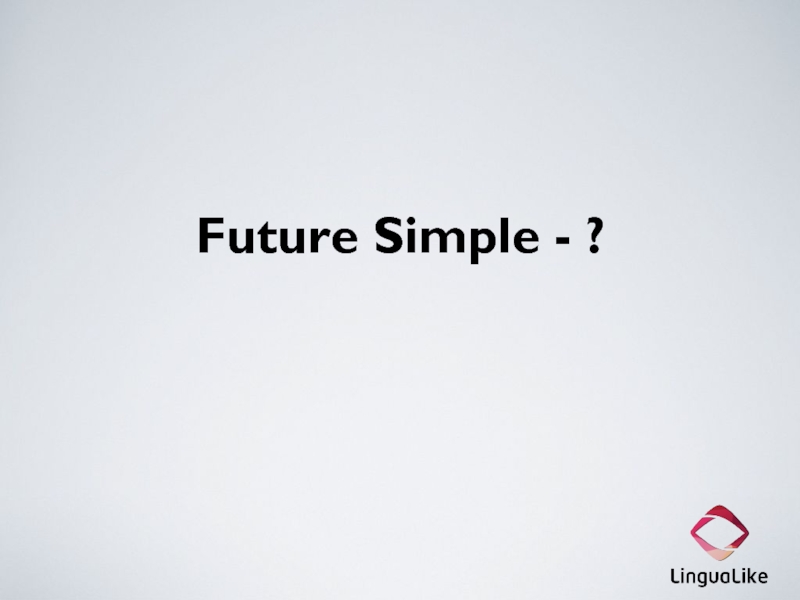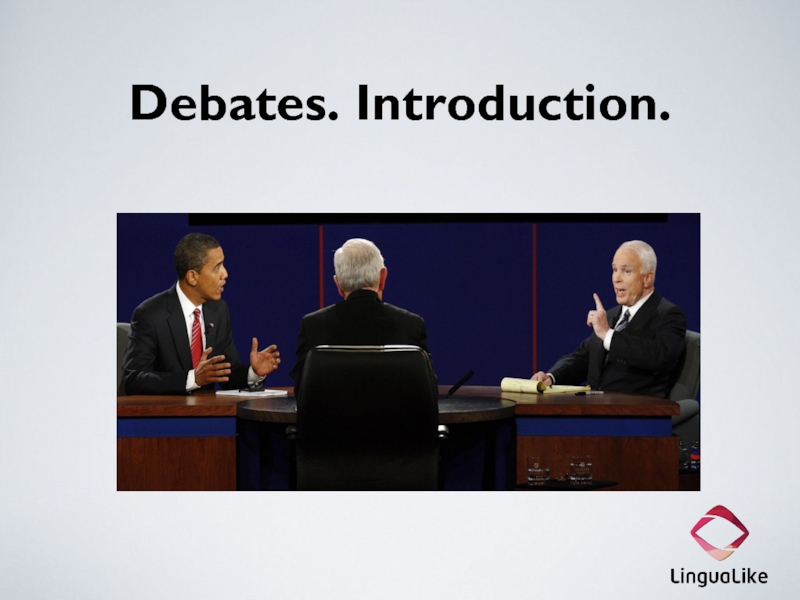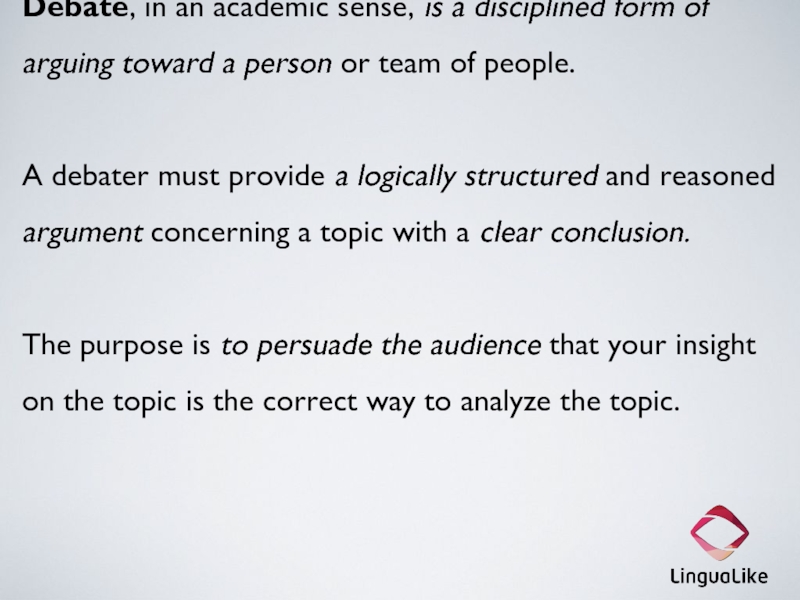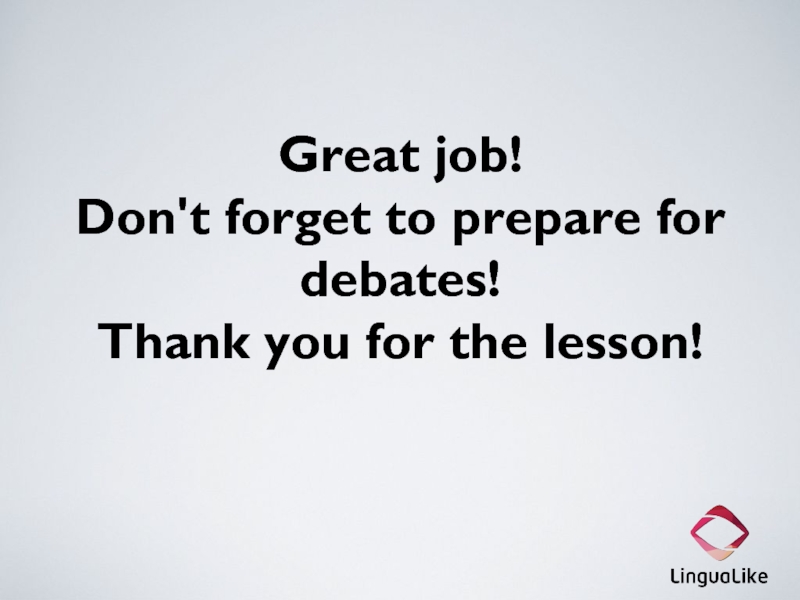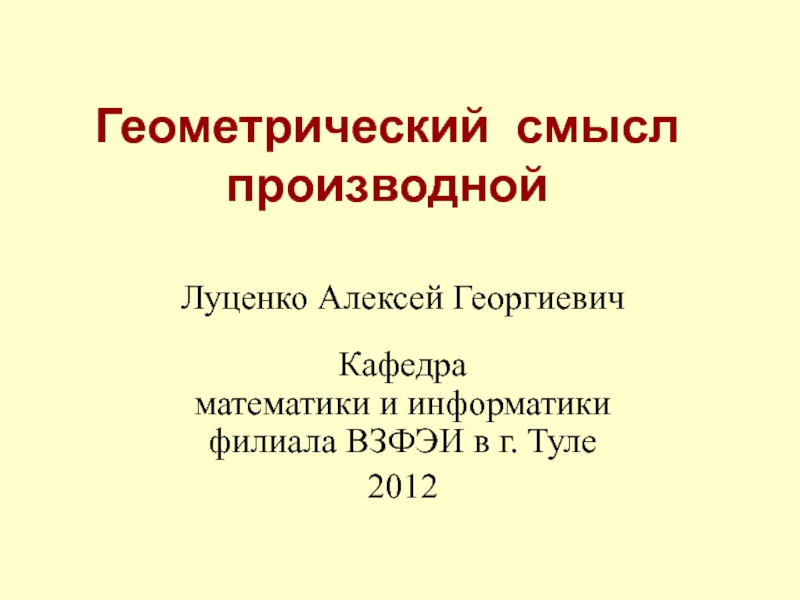Разделы презентаций
- Разное
- Английский язык
- Астрономия
- Алгебра
- Биология
- География
- Геометрия
- Детские презентации
- Информатика
- История
- Литература
- Математика
- Медицина
- Менеджмент
- Музыка
- МХК
- Немецкий язык
- ОБЖ
- Обществознание
- Окружающий мир
- Педагогика
- Русский язык
- Технология
- Физика
- Философия
- Химия
- Шаблоны, картинки для презентаций
- Экология
- Экономика
- Юриспруденция
I mean Hello ;) How’s everything?
Содержание
- 1. I mean Hello ;) How’s everything?
- 2. Let’s revise the future tenses
- 3. Future Simple - ?
- 4. Future Simple-Definite future arrangementsQuick question: what will
- 5. Present Tenses (I am doing) for the
- 6. Present Tenses (I do) for the future-timetables,
- 7. The continuous is more usual for personal future arrangements
- 8. Debates. Introduction.
- 9. French moralist and essayist Joseph Joubert once
- 10. Debate is often seen not only as
- 11. Debate, in an academic sense, is a
- 12. Basic RulesThe team represents the opinion they
- 13. OpeningsA debate begins with an opening statement
- 14. First RebuttalsAfter the opening statement, the next
- 15. Question, Answer and VoteAfter each team offers
- 16. Слайд 16
- 17. Let's make our own structure of debates and make sure we understand it all!
- 18. Now we divide into teams...
- 19. And prepare for next lesson's debates! Your statement is....
- 20. ‘Same-sex marriage should be banned’
- 21. Great job!Don't forget to prepare for debates!Thank you for the lesson!
- 22. Скачать презентанцию
Let’s revise the future tenses
Слайды и текст этой презентации
Слайд 4Future Simple
-Definite future arrangements
Quick question: what will your life be
like in the future?
I will run after this man!Слайд 5Present Tenses (I am doing) for the future
-for future arrangements
= I have already decided and arranged to do it
Example: I’m getting married this summer NOT I will marry this summer
Слайд 6Present Tenses (I do) for the future
-timetables, programmes, etc.
-fixed plans
as a timetable
Example: I start to work in this office
on MondayСлайд 9French moralist and essayist Joseph Joubert once said,
"It is
better to debate a question without settling it than to
settle a question without debating it."He was not alone in thinking this. For centuries debate has been an accepted, and often encouraged, form of communication and discussion.
Слайд 10Debate is often seen not only as a means of
reaching conclusions, but as a practice to expand one's mind
and develop tolerance.Throughout history, democratic civilizations have used debate as a means to reach decisions on issues and ponder greater intellectual issues.
Слайд 11Debate, in an academic sense, is a disciplined form of
arguing toward a person or team of people.
A debater
must provide a logically structured and reasoned argument concerning a topic with a clear conclusion. The purpose is to persuade the audience that your insight on the topic is the correct way to analyze the topic.
Слайд 12Basic Rules
The team represents the opinion they are for or
against.
A speaker is chosen in the debate team who
will lead much of the debate. The speaker from one team starts out the debate, usually speaking from the affirmative viewpoint. The affirmative has the advantage of saying what the topic is and then expressing the team opinion.
The opposing team speaker, called the negative, then rejects the way the first team presented the topic to the audience and presents its side of the argument.
Слайд 13Openings
A debate begins with an opening statement from the speaker
arguing the affirmative. This person has several duties he or
she must meet during this portion of the debate.The speaker must first define the topic, which consists of explaining what the topic means.
Next the speaker must present her team’s position on the topic and give a brief summary of the points.
Слайд 14First Rebuttals
After the opening statement, the next members on each
team present the first rebuttals.
This is followed by the
second speaker on the negative team. This person also begins with a restatement of his team’s position. He then rebuts the main points presented by the second affirmative speaker and presents the second half of his team’s case.Слайд 15Question, Answer and Vote
After each team offers a closing, the
audience and judges are given the opportunity to ask questions
of each team pertaining to the debate topic and their positions.These questions are typically given to the debate moderator, who then reads them aloud to the teams.
After this portion, the judges or audience vote to determine which team wins.


